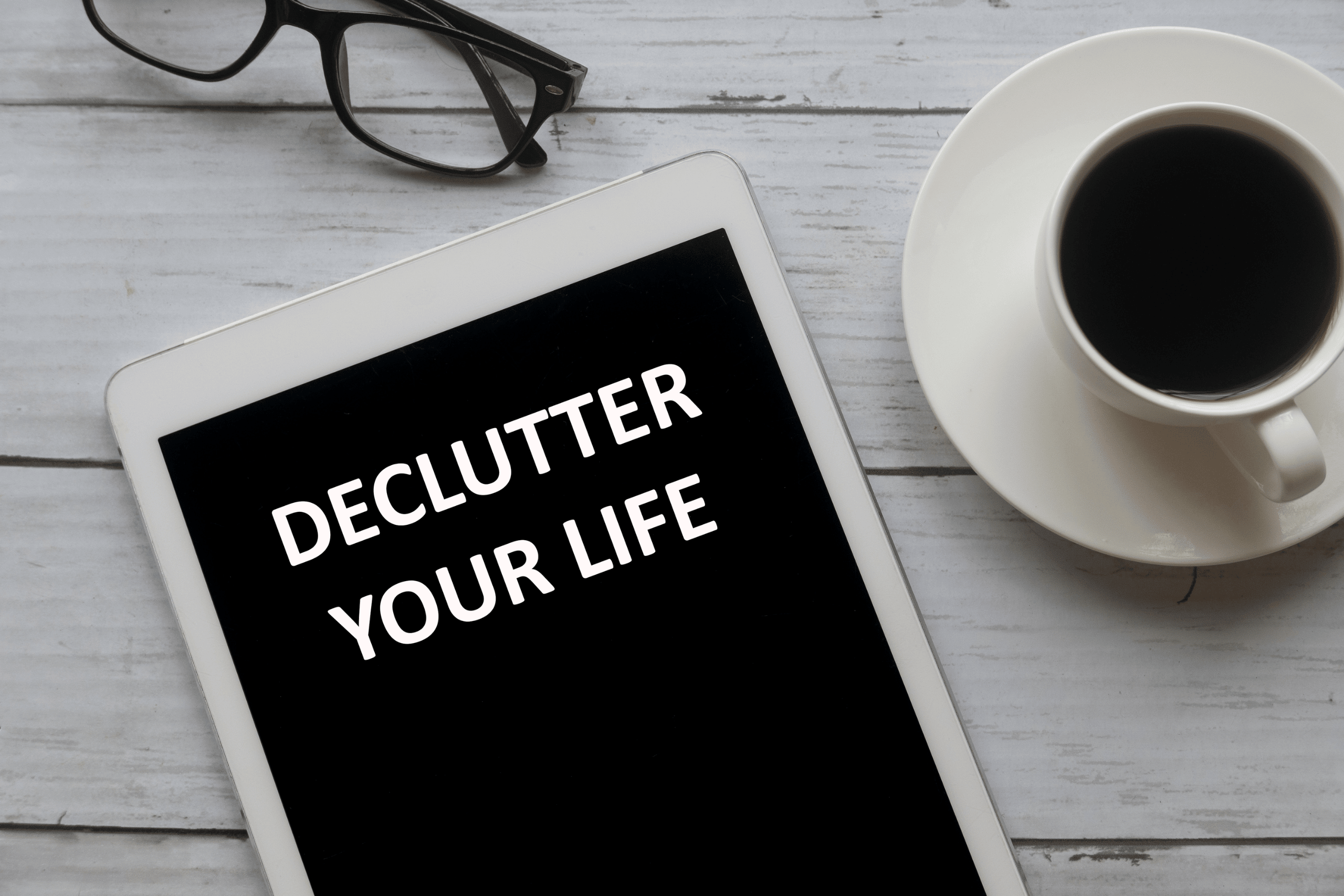
Decluttering Your Living Space: A Step-by-Step Guide to a Clearer Mind and Home
Early this summer, I visited a friend to drop off some items she had requested. She wasn’t home, but she gave me instructions on how to find the key and leave the items in her living room. When I opened the door, I was taken aback by what I saw. Piles of papers covered the coffee table, old clothes were strewn across the couch, and various other items were scattered everywhere. I had to clear a spot on the table just to put down what I had brought.
If you’ve ever felt overwhelmed by clutter, you’re not alone. Research shows that clutter can increase stress and anxiety levels, while an organized space can improve focus and overall mental health. Visiting her house made me understand why she always complained about stress and exhaustion while working from home. The next time we met for drinks, I knew I had to enlighten her on the need to declutter her space.
The average American home has tripled in size over the past 50 years, and yet people are finding themselves with more stuff than ever, according to the National Association of Professional Organizers.
In this blog post, we’ll walk you through actionable steps to declutter your living space, backed by expert opinions and the latest research.
The Importance of Decluttering
Decluttering is more than just tidying up; it’s about creating a space that brings clarity and peace. According to Dr. Sherrie Bourg Carter, a psychologist who specializes in mental health, clutter can lead to sensory overload, where your brain becomes overwhelmed by the sheer volume of things to process. “Clutter competes for your attention, leading to decreased performance and increased stress,” she says. Dr. Carter’s insights underscore how vital a decluttered space is for our overall well-being.
In fact, a study published in the Personality and Social Psychology Bulletin found that people who described their homes as cluttered were more likely to be fatigued and depressed than those with tidy spaces. This correlation between clutter and mental health issues highlights the importance of decluttering not just for physical space but for your mental clarity too.
A clutter-free environment also has an impact on decision-making. Princeton University researchers discovered that clutter makes it harder for people to focus on tasks, as visual distractions can slow down cognitive processing. In other words, when your environment is cluttered, you may find it more difficult to complete daily tasks efficiently.
Step 1: Start Small and Build Momentum
One of the biggest hurdles people face when decluttering is where to begin. The key is to start small. Instead of trying to tackle your entire home at once, focus on one room or even one area, like a single drawer or closet. Starting small allows you to build momentum and prevents the process from feeling overwhelming.
Marie Kondo, an organizing consultant and author of The Life-Changing Magic of Tidying Up, recommends the KonMari method. According to Kondo, “You should start with the easier categories like clothes and books before moving to sentimental items, which are harder to part with.” Her method encourages you to keep only those things that spark joy, a process that not only declutters but also reshapes your relationship with your belongings. Kondo’s approach has been embraced by millions worldwide because it addresses not just the physical act of decluttering, but the emotional attachment we have to our possessions.
Step 2: Categorize Your Items
After choosing a small space to begin with, the next step is to categorize your items. A common mistake is trying to declutter room by room, but experts suggest sorting your items by category—such as clothes, books, or kitchen utensils. This method helps you see how much of each category you own, making it easier to decide what to keep and what to let go of.
According to professional organizer Peter Walsh, “If you don’t know what you have, you can’t know what you need.” Walsh, a well-known decluttering expert with decades of experience, advises clients to lay out everything in one category in front of them. This visual approach helps people realize they may own more than they need, making the decision to declutter easier. A survey conducted by the National Association of Professional Organizers revealed that 54% of respondents felt overwhelmed by their clutter, but categorizing items helped them gain clarity and make more informed decisions about what to keep.
Step 3: Let Go of Sentimental Items Mindfully
Sentimental items often hold us back from decluttering effectively. However, it’s important to recognize that holding onto every sentimental item can prevent you from moving forward. Dr. Robin Zasio, a clinical psychologist who specializes in hoarding and decluttering, explains that while sentimental items have emotional value, they should not take over your living space. “Keep only a select few items that truly represent your memories,” she advises.
To help ease the process, take photos of items you’re reluctant to part with and create a digital memory album. This way, you can hold onto the memories without holding onto the physical clutter. According to Zasio, “The memories are in your heart, not the object.” Mindfully letting go of sentimental items helps you focus on what’s truly important, allowing your living space to remain organized and functional.
Step 4: Implement Practical Storage Solutions
Once you’ve decided what to keep, it’s time to implement storage solutions. Practical, accessible storage systems can prevent clutter from accumulating again. Invest in organizational tools like clear bins, drawer dividers, and shelving units to store your items in an orderly fashion.
A study published in the Journal of Environmental Psychology highlights that a well-organized environment can promote a sense of control and order in life. By creating designated spaces for your belongings, you reduce the chances of clutter building up again. Simple solutions like labeling storage bins or using furniture with hidden storage can also enhance the functionality of your home without taking up extra space.
Step 5: Declutter Regularly
Decluttering isn’t a one-time task; it requires regular maintenance. Set aside time each week or month to review your space and clear out items you no longer need. Regular decluttering ensures that you keep your space organized and avoid falling back into old habits.
Organizational expert Clea Shearer, co-founder of The Home Edit, suggests scheduling decluttering sessions to make it a regular part of your routine. “Think of decluttering as self-care,” Shearer says. “It’s about maintaining your space and keeping it in alignment with how you want to live.” Regular maintenance helps you stay in control of your environment and prevent clutter from overwhelming you again.
Step 6: Benefits of a Decluttered Space
Decluttering has several mental and physical benefits. Research from UCLA’s Center on Everyday Lives of Families found that clutter can raise cortisol levels, leading to stress. Elevated cortisol levels are associated with a host of negative health outcomes, including anxiety, depression, and impaired cognitive function. On the flip side, a clean, organized environment can improve focus, reduce anxiety, and boost creativity.
A decluttered space can also make your home more functional and aesthetically pleasing. You’ll find that daily tasks become easier when everything has its place. Additionally, letting go of excess items can help you become more intentional about future purchases, promoting a more minimalist and sustainable lifestyle. Studies from Yale University suggest that people who live in less cluttered environments make more mindful decisions about consumption, which can lead to more sustainable living practices.
Expert Opinions and Why They Matter
Throughout this post, we’ve referenced experts like Dr. Sherrie Bourg Carter, Marie Kondo, and Peter Walsh. Their opinions are grounded in years of experience, research, and real-world applications. When experts like Dr. Carter discuss how clutter impacts mental health, it’s based on years of studying the link between environment and psychology. Similarly, Marie Kondo’s organizing techniques have transformed homes worldwide, providing a clear, structured approach to decluttering.
Peter Walsh’s extensive career as a professional organizer lends credibility to the idea that clutter is not just a physical issue but also a psychological one. His insights, combined with real-world experience helping people simplify their lives, give weight to the argument that decluttering is essential for mental well-being. By turning to experts, we ensure that the advice given in this blog is not just anecdotal but backed by science and practical knowledge. This blend of research and expert opinion ensures that you can trust the steps outlined to transform your living space.
Conclusion
Decluttering isn’t just about tidying up—it’s about creating a lifestyle change. By adopting a mindset focused on organization and mindfulness, you’ll be able to maintain a clutter-free home that fosters peace and productivity. Psychologists, like Dr. Carter, emphasize that the benefits of decluttering go beyond physical space, impacting your mental health and overall well-being.
So, whether you’re like Sarah, overwhelmed by your living space, or simply looking to refresh your home, start small, follow these expert-backed steps, and enjoy the mental and physical benefits of decluttering. By making decluttering a habit, you can transform not just your living space but also your life, bringing more order, clarity, and calm to your daily routine.
Citation:
- Bourg Carter, S. (2012). The Impact of Clutter on Your Brain: Why You Can’t Focus. Psychology Today.
- Kondo, M. (2011). The Life-Changing Magic of Tidying Up. Ten Speed Press.
- Zasio, R. (2011). The Hoarder in You: How to Live a Happier, Healthier, Uncluttered Life. Rodale.
- Shearer, C., & Teplin, J. (2019). The Home Edit: A Guide to Organizing and Realizing Your House Goals. Clarkson Potter.
- UCLA Center on Everyday Lives of Families (2017). Clutter’s Effect on Stress and Family Dynamics. Journal of Environmental Psychology.











